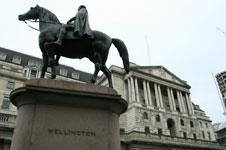Bank of England also ‘prints’ £75bn of new money to ease the burden of debt
The Bank of England has announced it will cut interest rates to a new all-time low of 0.5% and will print £75bn of new money to help boost the economy.
In a decision that was widely predicted by financial analysts, the central bank cut rates from 1% to 0.5%. The cut means Britain now has the lowest cost of borrowing in the Bank’s 315-year history.
The bank also announced it would begin “quantitative easing” or increasing the supply of money to ease the burden of debt.
The amount of money to be pumped into the economy will be £75bn, slightly less than expected; some analysts had predicted it would be as much as £150bn.
Quantitative easing does not mean the bank will print new banknotes; rather, it uses new money to buy assets such as government bonds rather than borrowing money to do it.
According to some analysts, increasing the supply of money will allow government securities to be purchased more easily, and lending will begin to unfreeze.
But printing money carries the risk of inflation spiralling out of control. It would be unlikely to end up like hyper-inflated economies such as that of Zimbabwe, but could end up costing the British taxpayer more than it will save the economy.




























